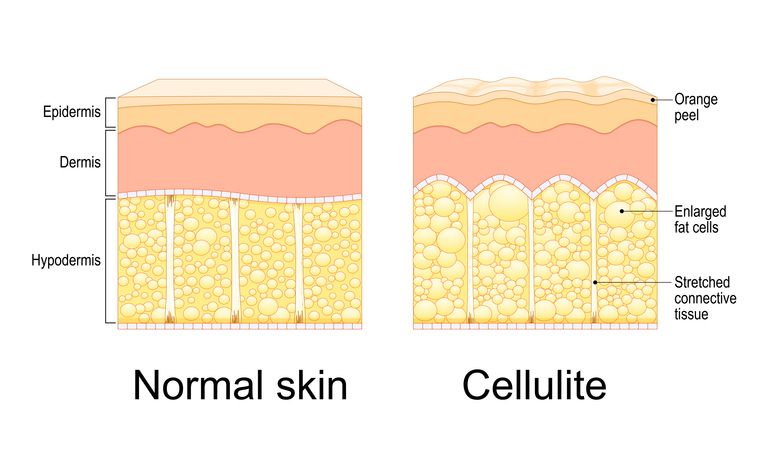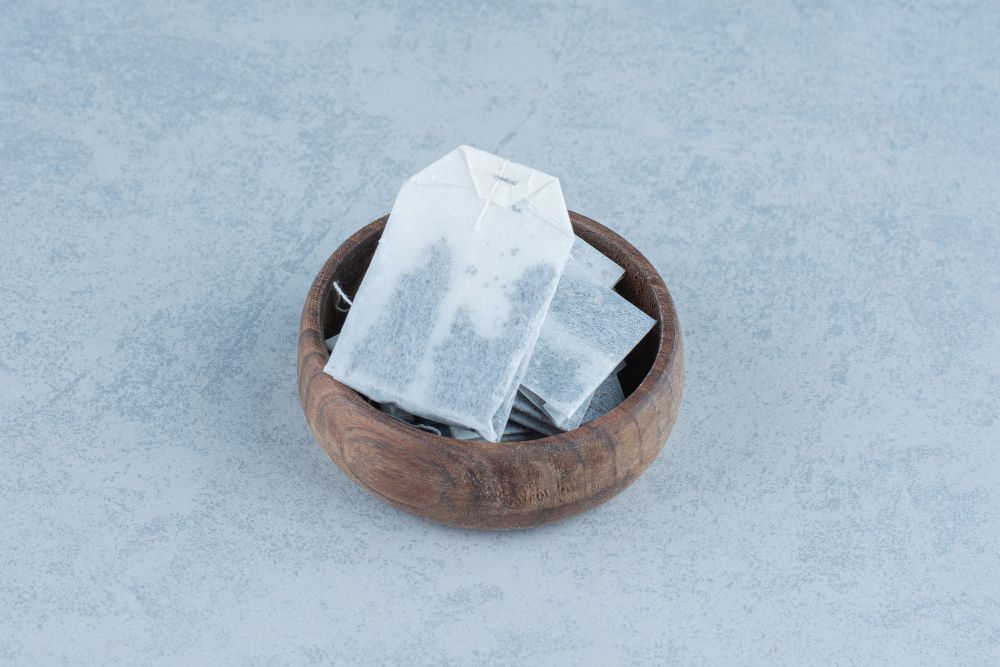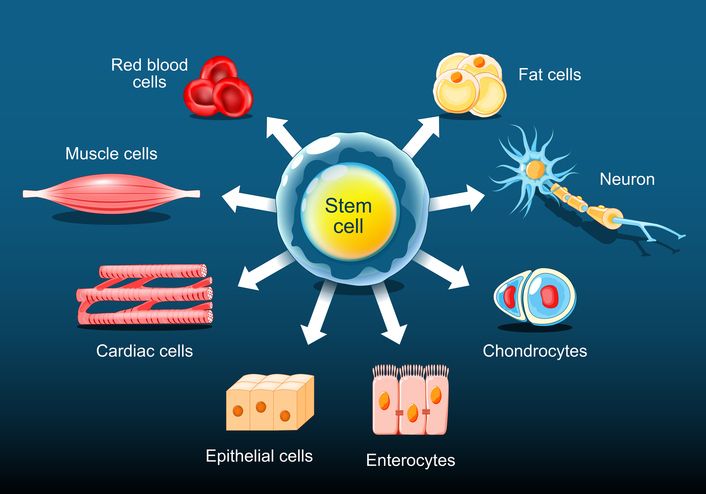Author: Natalie Ng|Updated: 17 June 2025
If you're dealing with breakouts that won’t go away, your diet might have something to do with it. Skincare can help manage the surface, but what you eat is more important than you realize—especially when it comes to acne caused by diet. Certain foods have been linked to increased acne severity, from sugary drinks and white bread to dairy products and high glycemic load diets. These can affect hormone levels, blood sugar, and sebum production, which may lead to acne breakouts or make existing acne worse. In some cases, frequent consumption of fatty or oily foods can also aggravate acne or trigger new flare-ups. This isn’t just about teenage acne either. Adult acne is becoming more common, and the link between dietary habits and skin health is gaining more attention, especially in young adults. Studies on acne vulgaris suggest that what you eat can influence how your skin behaves, even if you’ve had little or no acne in the past. If you've tried everything else, paying attention to what’s on your plate could help. Keep reading to find out which everyday foods might be making things worse, and how small changes can make a difference.

Acne Causing Food 1: Dairy Products and Milk-Based Foods
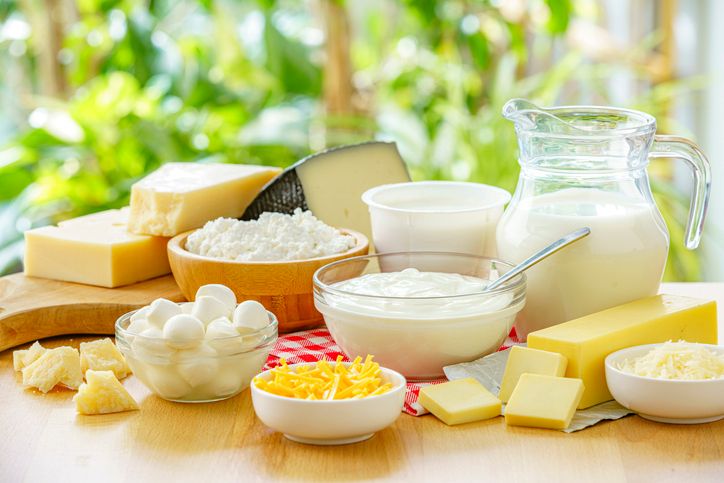
Dairy intake and acne severity
Although you may have heard that dairy products trigger acne breakouts, scientific research hasn't found strong evidence to support this belief. While some people report skin improvements after cutting out dairy, others notice no change at all.
Hormonal impact and individual skin reactions
Your skin's response to dairy can be highly individual, much like how some people can devour ice cream daily while others can't tolerate a splash of milk. Milk contains hormones that may affect your own hormone levels, which can lead to changes in sebum production and acne development.
Some research suggests that certain types of dairy, especially skim milk, may be more likely to:
• Increase insulin levels
• Stimulate excess sebum production
• Worsen existing acne vulgaris
• Lead to more severe acne outbreaks
These effects are more common in young adults and those already prone to acne caused by diet or hormonal changes.
Keeping track of dairy and skin changes
If you're concerned about dairy's effect on your skin, you don't need to eliminate it completely from your diet right away. Instead, try keeping a food diary for 4–6 weeks, tracking your dairy intake and any skin changes.
Include specific notes on:
• Types of dairy consumed (milk, cheese, yogurt, ice cream)
• Portion sizes
• Timing of acne breakouts or changes in acne severity
When you do consume dairy, opt for low-fat versions and keep portions to 1–2 servings a day. This allows you to monitor the link between dairy products and acne breakouts without removing important nutrients like calcium too quickly.

Acne Causing Food 2: High-Glycemic Carbohydrates and Sugary Snacks
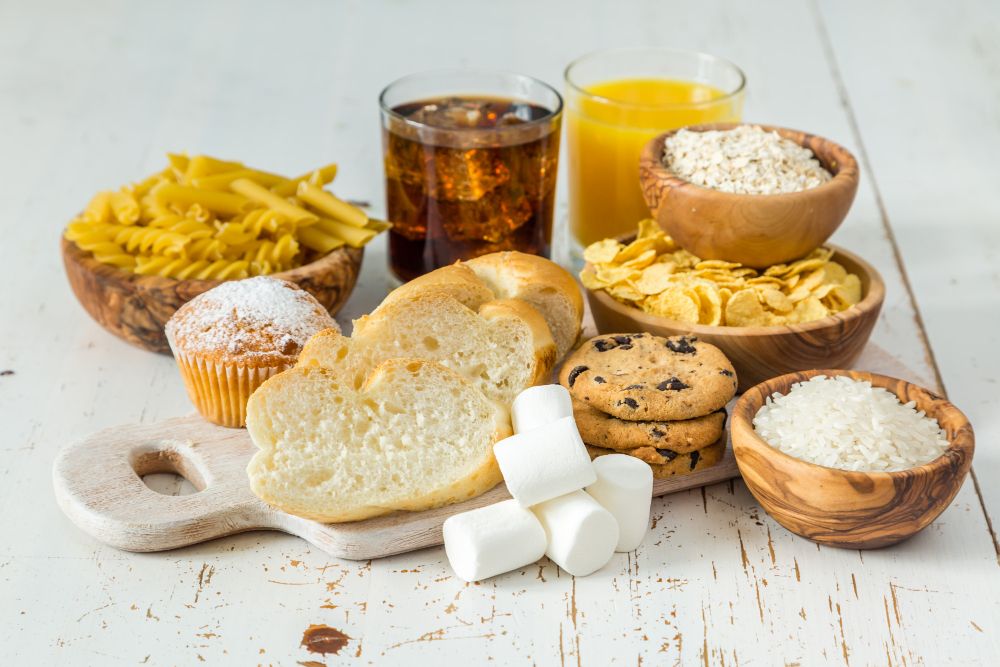
High glycemic load diet and acne severity
Unlike dairy products, the connection between sugary foods and acne has strong scientific backing. When you eat high-glycemic foods like white bread, sugary cereals, or candy, your blood sugar spikes quickly. These spikes trigger hormonal changes that can affect your sebaceous glands, leading to excess sebum production and inflamed skin.
Impact of insulin spikes on skin
Your body reacts to rising blood sugar by releasing insulin. That response can increase androgen activity, which makes oil glands more active. Over time, this can lead to more clogged pores, acne lesions, or worsen acne that's already present.
Foods that may contribute to this cycle include:
• White pasta and white rice
• Potato chips and similar processed snacks
• Soft drinks and sugary beverages
• Breakfast cereals with added sugars
These foods are common in diets with a high glycemic load and have been associated with increased acne severity, especially in young adults and those with untreated acne vulgaris.
Dietary swaps that support skin health
To support clearer skin and reduce acne outbreaks, choose foods with a lower glycemic index. That includes whole grain options and nutrient-dense snacks that help regulate blood sugar levels throughout the day.
Try swapping:
• White bread → whole grain or rye bread
• Sugary breakfast cereals → steel-cut oats
• Cookies and sweets → nuts or plain yogurt
• Sugary drinks → green tea or water
Read More
Book Now to Experience
Acne Treatment
1 Minute Self-Registration
Date should not be before minimal date

Acne Causing Food 3: Processed Fast Foods and Greasy Meals
Insulin resistance and acne breakouts
Processed fast foods are often loaded with hidden fats and refined carbohydrates that may trigger breakouts in acne-prone individuals. These foods tend to spike blood sugar quickly, leading to higher insulin levels. This can affect hormone balance and increase sebum production, which contributes to acne lesions and worsens existing acne.
Foods that may worsen acne
Frequent consumption of greasy or fast food meals can affect your skin through a combination of inflammation, hormonal changes, and excess oil on the skin's surface.
Some examples include:
• Burgers, fried chicken, and hot dogs
• Packaged snacks like french fries and mozzarella sticks
• Greasy noodles and ready-to-eat takeaway meals
These items are commonly linked to increased acne severity, particularly in diets high in trans fats and refined carbs. They can also affect your body mass index and inflammation levels, which may influence skin health.
Better choices for clear skin
To reduce acne breakouts linked to fast food consumption, replace greasy meals with whole foods that don't trigger sharp insulin responses. Opt for meals made at home using fresh ingredients, and focus on foods that provide steady energy without raising blood sugar too quickly.
Examples of skin-friendly alternatives include:
• Baked sweet potatoes instead of fries
• Grilled chicken with vegetables instead of fried options
• Whole grain rice bowls over deep-fried takeaway boxes

Acne Causing Food 4: Hidden Fats in Everyday Foods
Inflammatory fats and acne development
Despite what you might've heard about greasy foods being the main cause of breakouts, the relationship between dietary fats and acne isn't that simple. The real concern lies in inflammatory fats—especially those hidden in processed and packaged products. These fats may increase sebum production and skin inflammation, both of which are connected to acne caused by diet.
Foods with hidden problem fats
Some common items may seem harmless but often contain fats that can aggravate acne:
• Salad dressings made with low-quality oils
• Non-dairy coffee creamers
• Packaged snacks like crackers and chips
• Baked goods containing partially hydrogenated oils
These fats can disrupt your skin’s balance and contribute to clogged pores. While the outer appearance of these foods may not scream “greasy,” they still have the potential to worsen acne breakouts, especially in people with oily skin types or untreated acne vulgaris.
Small changes that can reduce acne severity
Reducing your intake of these hidden fats doesn’t mean you need to cut out all fats. In fact, certain fats—like those found in nuts, seeds, and avocados—support skin barrier function and reduce inflammation.
Try swapping out:
• Commercial salad dressings → olive oil with lemon or vinegar
• Processed snacks → unsalted nuts or plain popcorn
• Creamer with added oils → oat or almond milk
Book Now to Experience
Acne Treatment
1 Minute Self-Registration
Date should not be before minimal date

Acne Causing Food 5: Whey Protein Supplements
Whey protein and its effect on acne vulgaris
Whey protein is a popular choice for fitness enthusiasts, but some people have raised concerns about its link to acne breakouts. Despite the claims, scientific research has not found strong evidence that whey protein directly causes acne in most individuals. Still, there are cases where people report developing acne after starting these supplements, especially among young adults with oily skin or existing acne issues.
Tracking breakouts linked to whey intake
If you're using whey protein regularly and notice changes in your skin, it may help to keep a food and skin log for a few weeks. This can help identify patterns between your supplement intake and acne severity. Focus on:
• When you consume whey protein (timing and frequency)
• Any acne breakouts or skin changes that follow
• Other factors like sweat buildup after workouts or touching your face at the gym
These details may reveal whether whey protein is contributing to acne development—or if other habits are the real cause.
Exploring alternative protein options
If you're still concerned about whey and want to try other sources, plant-based protein powders are widely available and may be easier on the skin. Some commonly used options include:
• Pea protein
• Brown rice protein
• Hemp protein
These options can help you maintain your protein goals—around 0.8 to 1 gram per pound of body weight—without the potential effects some people experience from dairy-derived supplements.

Acne Causing Food 6: Chocolate and Cocoa Products
Chocolate consumption and acne breakouts
Chocolate is often blamed for acne, but it’s not the cocoa itself that may cause problems—it’s what comes with it. Many chocolate products contain high amounts of sugar and dairy, both of which have been linked to increased acne severity. These added ingredients can influence hormone levels and insulin response, which may lead to more sebum production and inflammation in the skin.
Differences between dark chocolate and milk chocolate
Not all chocolate affects the skin in the same way. Dark chocolate with a high cocoa content has less sugar and typically doesn’t contain milk, which makes it less likely to aggravate acne.
Key differences to watch for:
• Dark chocolate (70% or higher) contains antioxidants that may support skin health
• Milk chocolate combines sugar and dairy, both of which can trigger breakouts
• White chocolate contains no cocoa and is usually the highest in sugar content
If you’re dealing with regular acne breakouts or more severe acne, it may help to pay attention to which type of chocolate you’re eating and how your skin reacts afterward.
Choosing dairy-free chocolate alternatives
If you want to avoid acne triggered by sugar or milk consumption but still enjoy chocolate, there are plenty of options. Dairy-free chocolate bars made with oat, almond, or coconut milk can satisfy cravings without the added ingredients that may cause acne flare-ups.
Better chocolate choices may include:
• Cacao nibs or pure cocoa products
• Bars sweetened with monk fruit or stevia
• Carob-based treats with low glycemic impact
Tracking your chocolate intake in a food diary for a few weeks can help identify any links between chocolate consumption and acne outbreaks, especially if you're prone to increased acne severity after sugary or dairy-heavy treats.
Book Now to Experience
Acne Treatment
1 Minute Self-Registration
Date should not be before minimal date

Acne Causing Food 7: Foods Rich in Saturated Fats
Saturated fat intake and acne development
While greasy foods are often blamed for causing acne, there’s no direct scientific proof linking saturated fats alone to breakouts. Still, a diet high in fatty and sugary products may influence sebum production and hormone activity, especially in people already prone to acne vulgaris. The issue is less about the presence of fat and more about the type and amount consumed regularly.
Types of fats and their effects on skin health
Different fat sources affect the body in different ways. Here’s a simple breakdown of how certain foods rich in saturated fats may influence your skin:
• Fast food: May increase inflammation and raise insulin levels
• Dairy products: Could affect hormone balance and oil production
• Fried foods: May contribute to oxidative stress and clogged pores
• Healthy fats: Support the skin’s barrier and moisture balance
A diet that includes large amounts of processed foods high in saturated or trans fats may worsen acne severity and contribute to long-term skin issues in some individuals.
Healthier fats that support clear skin
Instead of avoiding all fats, aim to replace the problematic ones with sources that support skin health. Omega-3-rich foods, for example, may help reduce inflammation and keep your skin barrier strong.
Try including:
• Avocados
• Fatty fish like salmon or sardines
• Chia seeds and flaxseeds
• Walnuts and almonds
• Extra virgin olive oil
Focusing on a balanced diet that includes healthy fats can help reduce the likelihood of acne breakouts.

Acne Causing Food 8: Soy and Artificial Sweeteners
Soy-based products and acne outbreaks
Soy doesn't automatically lead to acne, but individual responses can vary—especially in people sensitive to hormonal shifts. Soy contains compounds called isoflavones, which can mimic estrogen in the body. These may influence hormone levels, potentially affecting oil production and contributing to acne development in some individuals.
Common soy-based foods to monitor include:
• Soy milk and soy-based dairy alternatives
• Tofu and tempeh used in main dishes
• Processed snacks and protein bars with soy protein or soy lecithin
If you're concerned that soy may be making your acne worse, track your intake in a food diary. Watch for patterns over a two-week period, especially acne flare-ups that appear within 24 to 48 hours of eating soy-heavy meals.
Soy elimination and reintroduction testing
To test your skin’s response to soy, start by removing soy products from your diet for two weeks. Then, slowly reintroduce one product at a time and monitor any changes in your skin. This can help you spot specific triggers without cutting out soy completely, especially if it's a regular part of your diet.
If soy seems to aggravate acne, you can replace it with other protein sources like:
• Lentils
• Eggs
• Quinoa
• Chickpeas
• Fish or poultry
These alternatives can support your dietary needs without increasing acne severity.
Artificial sweeteners and skin health
Artificial sweeteners like aspartame, sucralose, and stevia are often used as substitutes for sugar, especially in diet sodas and low-calorie snacks. Research shows these ingredients don't directly trigger acne, but they may still affect skin indirectly.
Drinking too many artificially sweetened beverages could reduce your overall water intake, which is important for skin hydration and clarity. Instead of reaching for multiple cans of diet soda each day, try:
• Limiting to one diet drink daily
• Choosing plain water or unsweetened green tea
• Adding fruit slices to water for flavor without sugar
Book Now to Experience
Acne Treatment
1 Minute Self-Registration
Date should not be before minimal date

How Diet Affects Skin on a Deeper Level
The connection between diet and acne isn’t just about what appears on your plate—it’s about how your body reacts to certain foods beneath the surface. Many common acne-triggering foods, like those high in refined carbohydrates or saturated fat, affect internal systems that control skin oil, cell turnover, and inflammation.
A high glycemic load diet, for example, raises your blood sugar quickly. In response, your body produces more insulin. Higher insulin levels can increase androgen activity, which stimulates your sebaceous glands to produce more sebum. Over time, this oil buildup combined with dead skin cells, can clog pores and lead to acne lesions.
This internal chain reaction may explain why certain foods seem to make acne worse even if you're following a regular skincare routine. Acne caused by diet often involves:
• Increased sebum production
• Faster skin cell turnover
• Inflammation from insulin resistance
• Hormone level changes that affect oil glands
These changes are especially common in teenage acne, adult acne, and acne vulgaris. And while switching to a low glycaemic load diet may help reduce acne severity, some skin still needs extra support to heal and recover.
That’s where professional treatment comes in.

Acne Caused by Diet? Here’s a Treatment That Clears What Food Can't
Diet plays a role in acne development, especially when certain foods increase hormone activity, spike blood sugar, or cause excess sebum production. But even after cutting back on dairy, avoiding sugary foods, or switching to a low glycaemic load diet, breakouts can still persist. That’s where professional support can make a difference.
New Beauty’s Acne Treatment is designed specifically for acne-prone skin—including those struggling with acne caused by diet. Whether your skin reacts to oily foods, refined carbohydrates, or hormone-disrupting ingredients, this treatment helps target the underlying buildup that food changes alone may not resolve.
How the Acne Treatment Works
The treatment starts with dual spiral suction and drainage that exfoliates dead skin cells and clears clogged pores. This process removes the oily substance and debris that often builds up from increased sebum production—commonly linked to dietary habits.
Once the skin is deeply cleansed, a hydrating medical-grade serum is infused into the skin to restore moisture levels, balance the skin’s water-oil ratio, and support collagen production. These steps help reduce existing acne and prevent new breakouts from forming.
Why This Treatment Is Effective
• Targets diet-related acne triggers such as excess oil, inflammation, and clogged pores
• Non-invasive and needle-free, with no downtime or recovery period
• Reduces acne severity and acne scars through vacuum microdermabrasion
• Calms oily skin and helps manage overactive sebaceous glands
• Improves skin hydration, texture, and overall clarity
This treatment is suitable for acne vulgaris, moderate to severe acne, blackheads, whiteheads, and inflamed breakouts—especially when dietary changes haven’t fully cleared your skin.
Book your Acne Treatment consultation now and take the next step toward clearer, healthier skin.
New Beauty's Acne Treatment
Final Thoughts
There’s no one-size-fits-all answer when it comes to acne, but if you’ve already looked at your skincare routine and nothing’s changed, your diet might be part of the picture. Making a few changes by cutting back on sugar, paying attention to dairy, or keeping an eye on how certain foods affect your skin in the long term.
If things still aren’t clearing up, you may just need a little extra help from a treatment to clear out buildup, calm the skin, and maintain balance from the inside out.
Book Now to Experience
Acne Treatment
1 Minute Self-Registration
Date should not be before minimal date
FAQ
1. Can a low glycaemic load diet completely cure acne?
A low glycaemic load diet can help reduce acne severity in many people, especially those whose breakouts are linked to blood sugar spikes and excess sebum production. It may lower insulin levels and calm sebaceous gland activity. However, acne caused by diet isn't always the only factor. Hormones, genetics, and skincare habits also play a role. While this kind of diet can improve acne, it may not fully clear it without additional skincare or treatments.
2. Can stress and poor dietary habits together make acne worse?
Yes, stress and poor dietary habits can work together to worsen acne, especially in people already prone to breakouts. Stress may disrupt hormone levels, including cortisol and androgens, which can trigger excess oil production. When this is combined with frequent consumption of fatty and sugary products, refined carbohydrates, or oily foods, the result is often an increase in acne lesions and inflammation. While diet affects sebum production and insulin response, stress can intensify these effects, making it harder for the skin to recover from acne vulgaris or prevent new breakouts. Managing both stress and diet is key to reducing increased acne severity.
3. Does too much iodine in food cause acne?
Excessive iodine intake—often found in certain seafood, iodized salt, and some supplements—has been reported to aggravate acne in a small number of individuals. High iodine levels may overstimulate the thyroid gland or increase inflammation, potentially leading to more acne lesions. However, the connection between iodine and acne isn’t fully proven, and most people tolerate normal dietary iodine levels without breakouts.
4. How does body mass index (BMI) relate to acne?
A higher body mass index may be associated with more severe acne, particularly in those consuming a diet rich in trans fats, refined carbohydrates, and sugary drinks. Increased adipose tissue can affect hormone levels, potentially leading to excess sebum production and more acne breakouts. While BMI alone doesn't cause acne, it can reflect lifestyle factors that contribute to acne development.
5. Can drinking green tea help reduce acne?
Green tea is rich in antioxidants like EGCG, which may help reduce inflammation, regulate hormone levels, and support healthy skin. Some studies suggest that green tea—especially when consumed regularly—may assist in managing acne caused by diet by lowering insulin resistance and calming oily skin. While it’s not a cure, adding green tea to a balanced diet may support other acne treatments.
Recommended Articles
COPYRIGHT© NEW BEAUTY MANAGEMENT LIMITED 2025. ALL RIGHT RESERVED.

